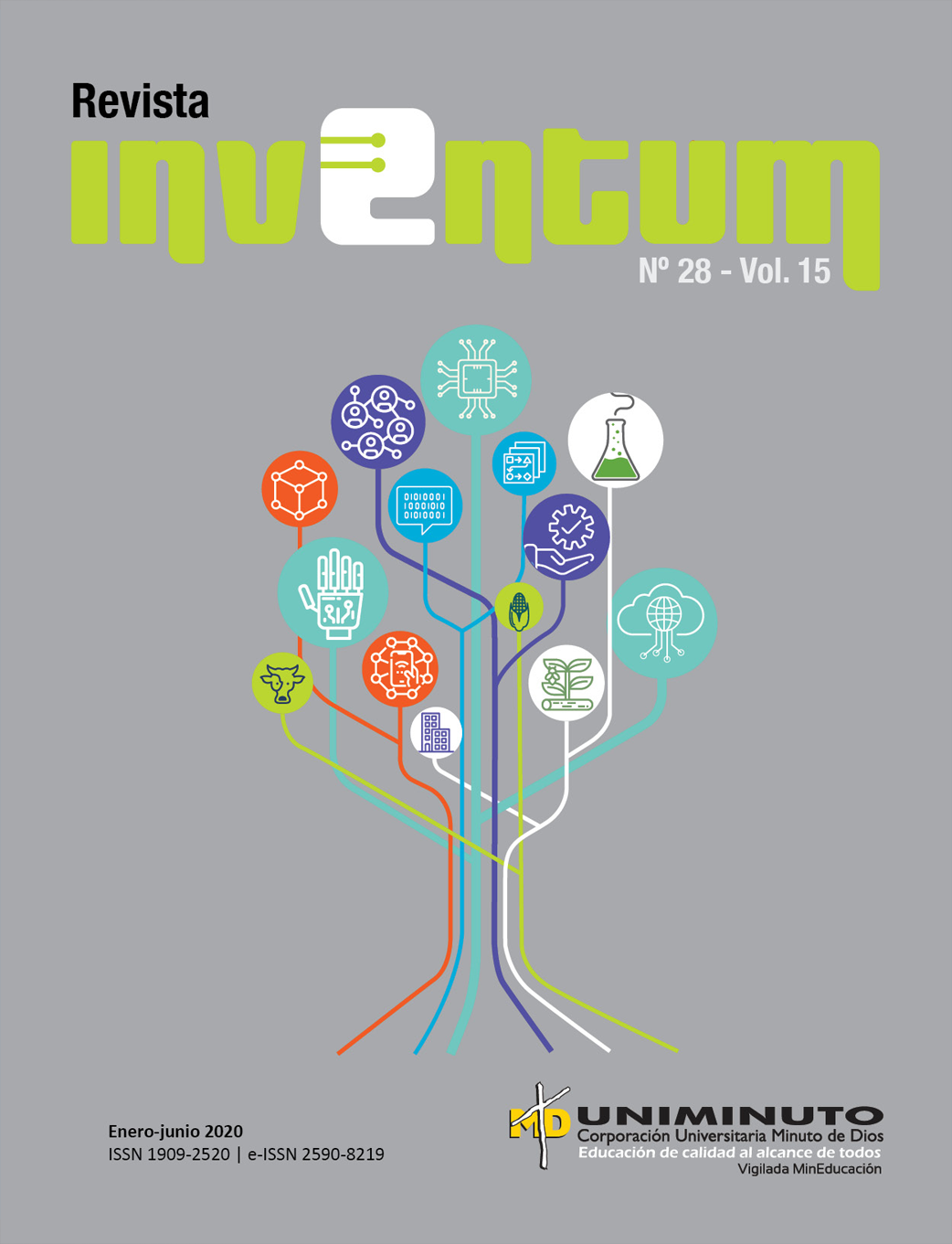Government Business Architecture Repository (GEAR). An open state, supported by information and communication technologies (TIC)
Main Article Content
Abstract
This article refers to the research work, design and implementation of models oriented towards the maximum use of Information and Communication Technologies (ICT) in the context of the construction of an open, efficient, transparent and participative state, that allows the provision of collaborative services for the community. These models are designed according to the guidelines of the public administration, in terms of article 39 of law 489 of 1998 and framed in the national development plan (PND) and the cross-cutting programs of public management. In this case, it is a question of going deeper into the field of Business Architecture (AE) as one of the instruments that enables the implementation of ICT supported projects in Colombia.
AE Business Architecture is considered as one of the main strategic elements, whose theoretical and operational foundation is part of the comprehensive analysis of government entities, from different perspectives and dimensions, these critical views of the institutions are the input to carry out diagnoses - prognoses capable of generating proposals and Alternatives that contribute to the transformation and modernization of institutions based on the use and appropriation of ICT information and communication technologies.
In order to achieve the objectives of ICT implementation and its application in the field of administration and governance, it is essential to start from the AE Reference Framework for technology management, here it is about establishing a reference model to be implemented as a guiding structure for the AE business architecture. The frame of reference or theoretical framework, based on the conceptual structure, consists of defining the guidelines on significant practices (memorable, significant), which have been made based on the use and implementation of EA in the context of ICT Information and Communication Technologies.
The Government Business Architecture Repository (GEAR), has stood out for being one of the online governance strategies, it is legally supported based on article 209 of the Political Constitution, the 3rd of Law 489 of
1998 and 3 of Law 1437 of 2011, which establishes the parameters for the provision of high-quality service, on the strategy of reusing public data, its treatment and standardization, as well as its neutrality, innovation and collaboration. The foundations of the strategy are developed through 4 components that will facilitate the massification of supply and demand for online government. These are ICT for services, ICT for open government, ICT for information management and security and privacy.
References
[2] R. M. Roberto Mauricio, “Big Data el nuevo orden de la información y la comunicación”,
Publ. investig., vol. 13, n.º 2, pp. 93-99, jul. 2019.
[3] S. M. Arango y Londoño, “Enterprice architecture: a general scope”, Revista Ingenierías
Universidad de Medellin, vol. 9, p. 16, 2010.
[4] MinTIC. (2016). “Decreto 415 de 07 de marzo de 2016”. [En línea]. Disponible en: https://
www.mintic.gov.co/portal/604/w3-article-61527.html.
[5] D. Brown y P. Bahrs, “Arquitectura empresarial para Ingenieros de Sistemas”, [En línea].
Disponible en: https://www.ibm.com/developerworks/ssa/rational/library/edge/09/jun09/enterprisearchitecture/index.html. [Último acceso: 02 11 2018].
[6] R. Carnabal y A. Cabarcas, “Aplicacion de un esquema de Arquitectura Empresarial (Togaf)
para una Pequeña empresa PYME utilizando aplicaciones colaborativas de Google”, Información
Tecnológica, vol. 28, pp. 85-92, 2017.
[7] B. H. Cruz y P. W. Briceño, “Identificación de principios de arquitectura empresarial para la
gestión de factores de impacto en entidades públicas colombianas utilizando Togaf”, Inventum
Ingenieria, vol. 10, pp. 22-28, 2015.
[8] H. Jonkerset, “Enterprise architecture: Management tool and blueprint for the organization”,
Information Systems Frontiers, vol. 8, nº 2, pp. 63-66, 2006.
[9] S. Kaisleret, “Enterprise Architecting: Critical Problems”, en 38th Hawaii International
Conference on System Sciences, Hawaii, 2005, pp.
[10] M. Lankhorst, Enterprise Architecture at Work. Modeling, Communication and Analysis,
Berlin: Springer, 2016.
[11] MinTIC. (2013, Diciembre 2). “Un Estado integrado: La meta de la arquitectura empresarial
para Colombia”. Cio@gov. n° 2, pp. 4-9. [En línea]. Disponible en: https://www.mintic.gov.co/gestionti/615/articles-5322_Revista_pdf.pdf
[12] F. De Boeret, “Change Impact Analysis of Enterprise Architectures”, en 2005 IEEE International
Conference on Information Reuse and Integration, Las Vegas, 2005, pp. 15-17.
[13] F. Goethalset, “Managements andenterprice architecture click: The FADE framework”, Information
Systems Frontiers, vol. 8, nº 2, pp. 67-79, 2006.
[14] C. Granja, M. Vallejo, Adopción de un marco metodológico de arquitectura empresarial en
una empresa gubernamental, Tesis de grado previa a la obtención del título de Magíster en Gerencia de Tecnologías de la Información, Escuela de Sistemas, Facultad de Ingeniería,
Pontificia Universidad Católica de Ecuador, 2014.
[15] M. A. Malleuve, Alfonso y R. D., “Study of elements behavior for integration management
system with enterprise architecture approach”, Dyna, vol. 84, nº 203, pp. 349-355, 2017.
[16] R. J. Martelo, I. Blanquicet y L. Rodríguez, “Metodología para Seleccionar Aplicaciones
de la Tecnología de Comunicaciones Voz sobre la IP (VoIP) para pequeñas y medianas empresas (Pymes). El caso de una Agencia de Viajes, Información Tecnológica, Vol. 26, n° 6, pp. 121-128, 2015.
[17] J. M. J. Miller, Model Driven Architecture, Technology Committee and Architecture Board,
Editors: Joaquin Miller and Jishnu Mukerji. United States on December 13, 2010.
[18] MinTIC. 2018. “Ministerio de las Tecnologías de la Información y las Comunicaciones”. [En línea]. Disponible en www.mintic.gov.co.
[19] MinTIC. “Uso y aplicación”. [En línea]. Disponible en: https://mintic.gov.co/arquitecturati/
630/w3-propertyvalue-8120.html.
[20] MinTIC. (2014). “Arquitectura empresarial. El camino hacia un gobierno integrado”. [En
línea]. Disponible en: http://www.mintic.gov.co/gestionti/615/articles-5322_Revista_pdf.pdf
[21] A. Molano. (2017). “Qué es arquitectura empresarial”. [En línea]. Disponible en:
https://repositorio.escuelaing.edu.co/bitstream/001/690/2/Var%C3%B3n%20G.%2C%20Yenny%20Paola%20-%202017.pdf
[22] P. Project Management Institute, Fundamentos para la dirección de proyectos, 5ª ed
Ciudad: Newtown Square, Pensilvania 19073-3299 EE.UU. Springer-Verlag, pp.3 -58 2013.
[23] S. A. Sanin. (2005). “Definición de una arquitectura empresarial en una empresa que nace con un legado complejo”. [En línea]. Disponible en: https://slideplayer.es/slide/1700958/
[24] MinTIC. “Marco de Referencia de Arquitectura v. 2.0”. [En línea]. Disponible en: https://
mintic.gov.co/arquitecturati/630/w3-propertyvalue-8118.html





